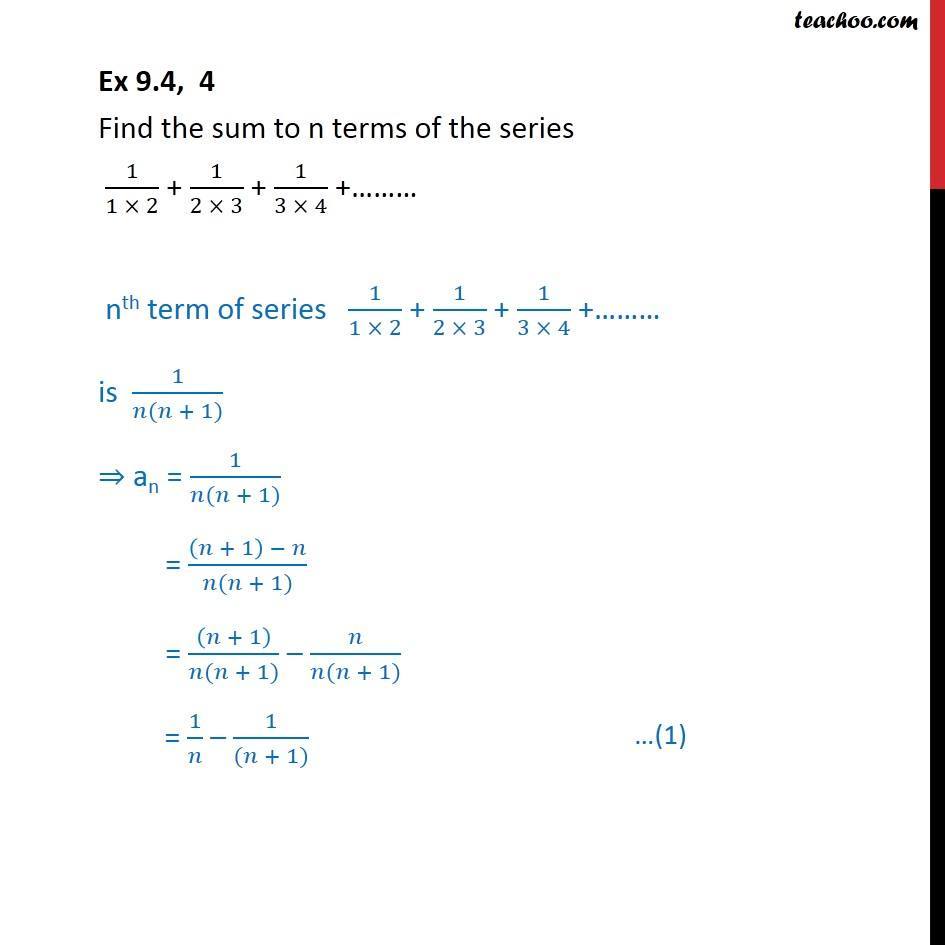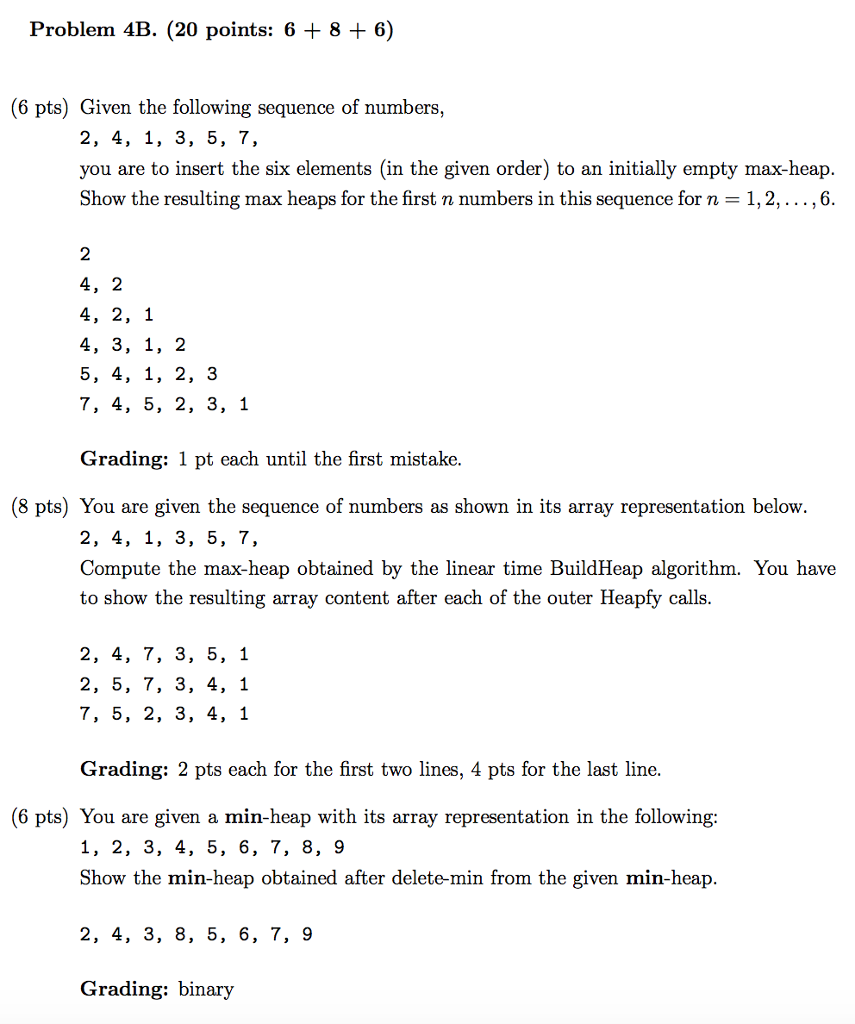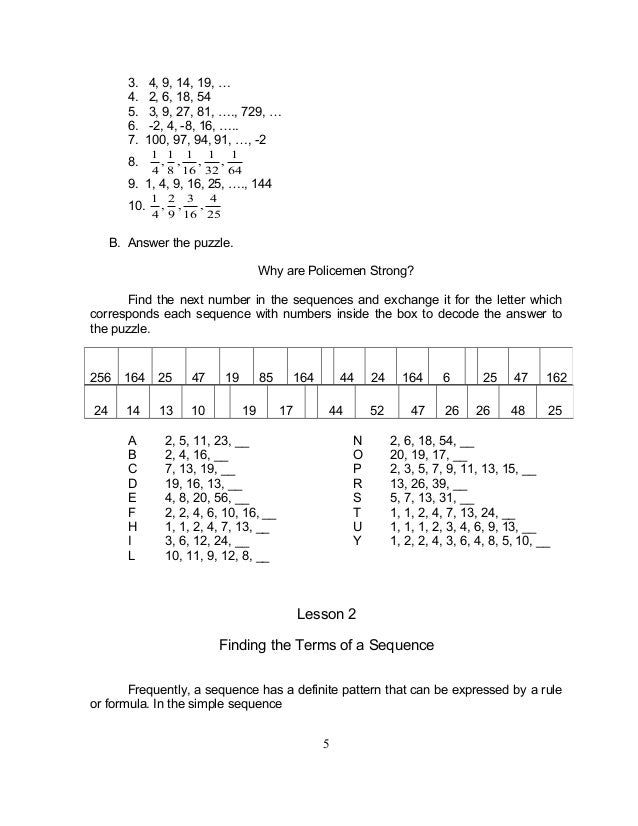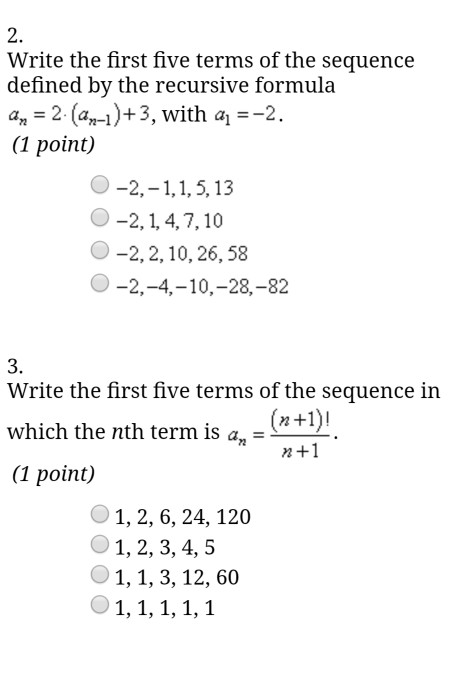1 2 1 3 1 4 Sequence

This is the form of a geometric sequence.
1 2 1 3 1 4 sequence. 1 5 1 6 1 7 1 8 1 9 1 10. In mathematics the kolakoski sequence sometimes also known as the oldenburger kolakoski sequence is an infinite sequence of symbols 1 2 that is the sequence of run lengths in its own run length encoding and the prototype for an infinite family of related sequences. A fibonacci sequence is a sequence in which every number following the first two is the sum of the two preceding numbers. This is not a geometric progression.
In mathematics the harmonic series is the divergent infinite series. For example the first two. It is a harmonic sequence the reciprocals of successive terms being in arithmetic progression. This sequence is in harmonic progression.
In other words. The first two numbers in a fibonacci sequence are defined as either 1 and 1 or 0 and 1 depending on the chosen starting point. Its name derives from the concept of overtones or harmonics in music. Stack exchange network consists of 176 q a communities including stack overflow the largest most trusted online community for developers to learn share their knowledge and build their careers.
It is a harmonic one. It is named after the recreational mathematician william kolakoski 1944 97 who described it in 1965 but subsequent. The difference between consecutive terms is not consistent. Examine to see if there s a common ratio.
In arithmetic progression the common difference between any two c. In this case multiplying the previous term in the sequence by gives the next term. The wavelengths of the overtones of a vibrating string are 1 2 1 3 1 4 etc of the string s fundamental wavelength every term of the series after the first is the harmonic mean of the neighboring terms. It is just decreasing denominator by one each time.
1 2 1 1 2 1 3 1 2 2 3 1 4 1 3 3 4 the ratio between successive terms is not common so this is not a geometric sequence. You could also say that they are breaking the numbers into the next nearset.














